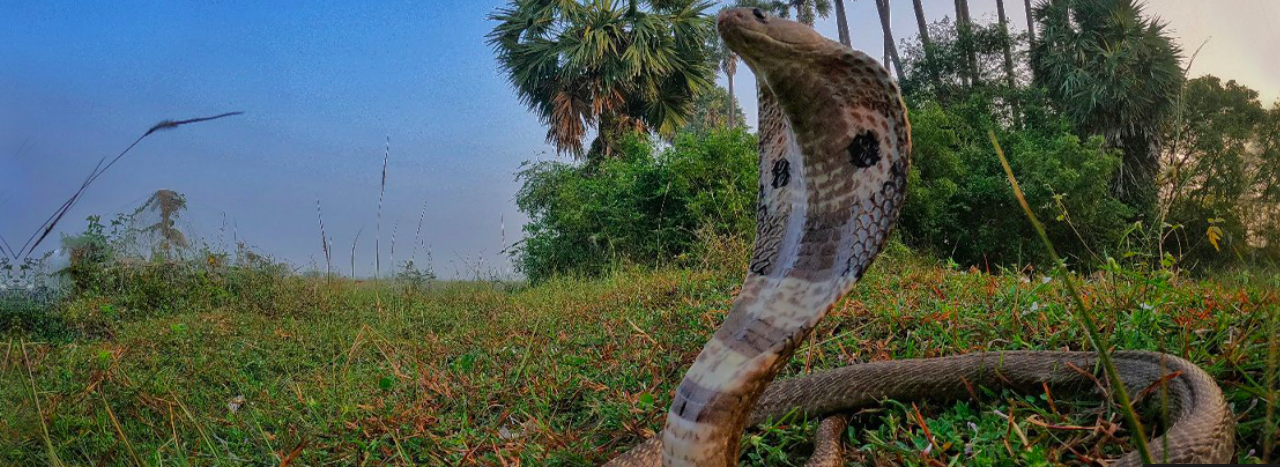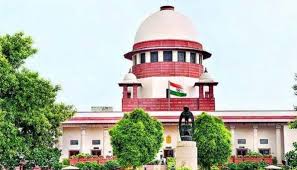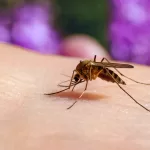Nearly 60,000 Indians die of snakebite envenoming each year. Most deaths occur in villages where a host of human and ecological factors converge to heighten the odds of encounters with snakes and subsequent bites.
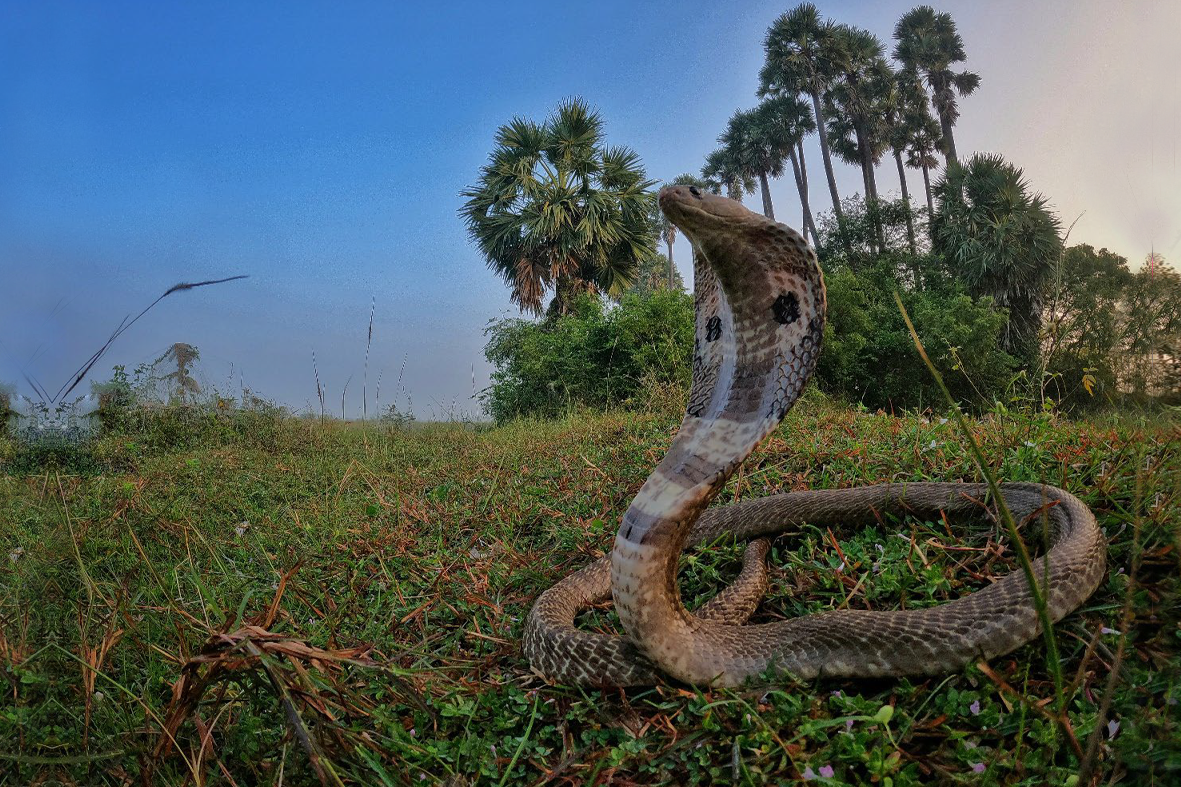 ©Gnaneswar Ch, An Indian cobra. Kanchipuram, Tamil Nadu, India, November 2021.
©Gnaneswar Ch, An Indian cobra. Kanchipuram, Tamil Nadu, India, November 2021.
India’s agrarian workers are particularly affected. Their reliance on non-mechanised, low-cost farming techniques, as well as barefoot farming practices, places them at high risk of bites, especially during the monsoons, when agricultural activities and snake breeding seasons tend to intersect. Precarious housing conditions, poor lighting, sleeping on the floor and outdoor toilets are other factors associated with an increased risk of snake encounters.
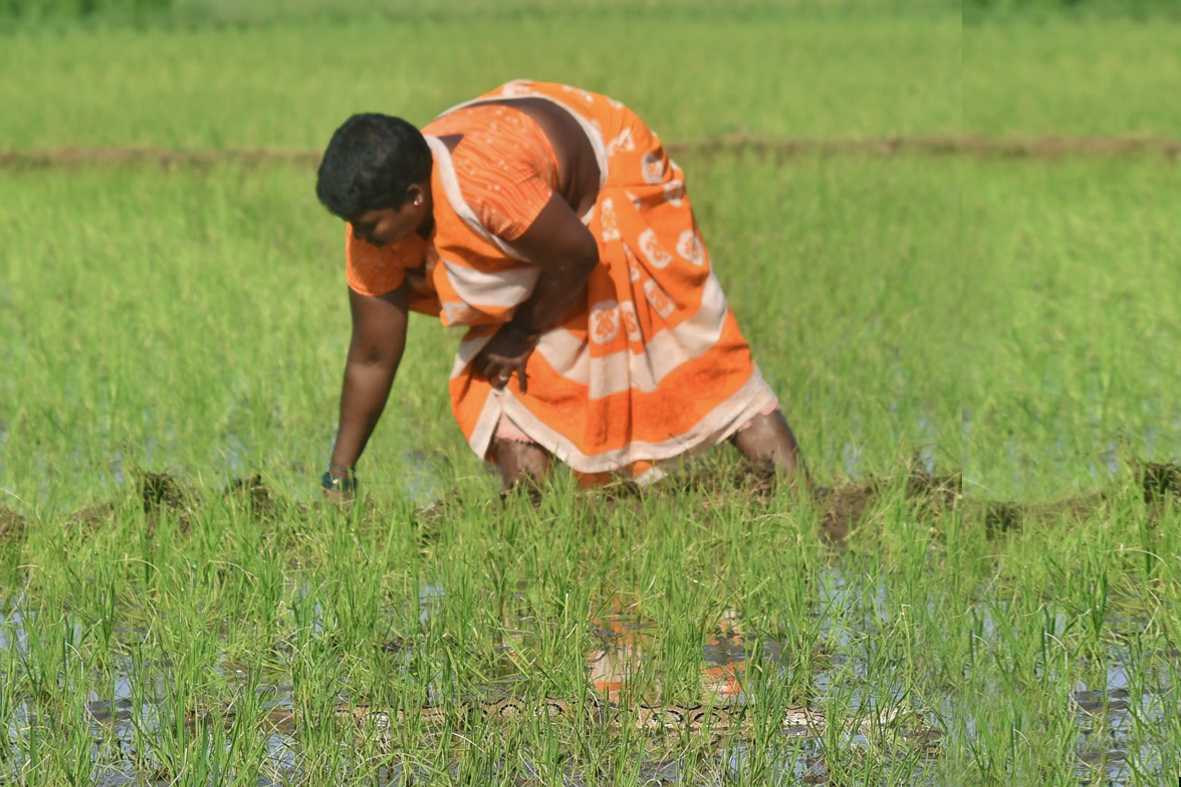 ©Gnaneswar Ch
©Gnaneswar Ch
Most snakebites in the developing world are a result of the intersection of human activities and snake habitats. In this picture, a woman works in a paddy field as a snake lies nearby, Kanchipuram, Tamil Nadu, India, November 2021.
A low-cost, sustainable approach
Empowering communities through knowledge and practical interventions is a low-cost and sustainable approach to the problem of snakebites in India. In recent years, the Poison Control Centre at the Christian Medical College (CMC), in Vellore, South India, has been closely involved in empowering village communities in and around Vellore with regard to snakebite prevention and first aid.
Health facilities equipped with snake antivenom and critical care support are often located at considerable distances from the places where snakebites occur. Due to this, and other cultural factors, many Indian snakebite victims often resort to traditional therapies. These can further delay access to effective treatment and can often cause harm to the victim.
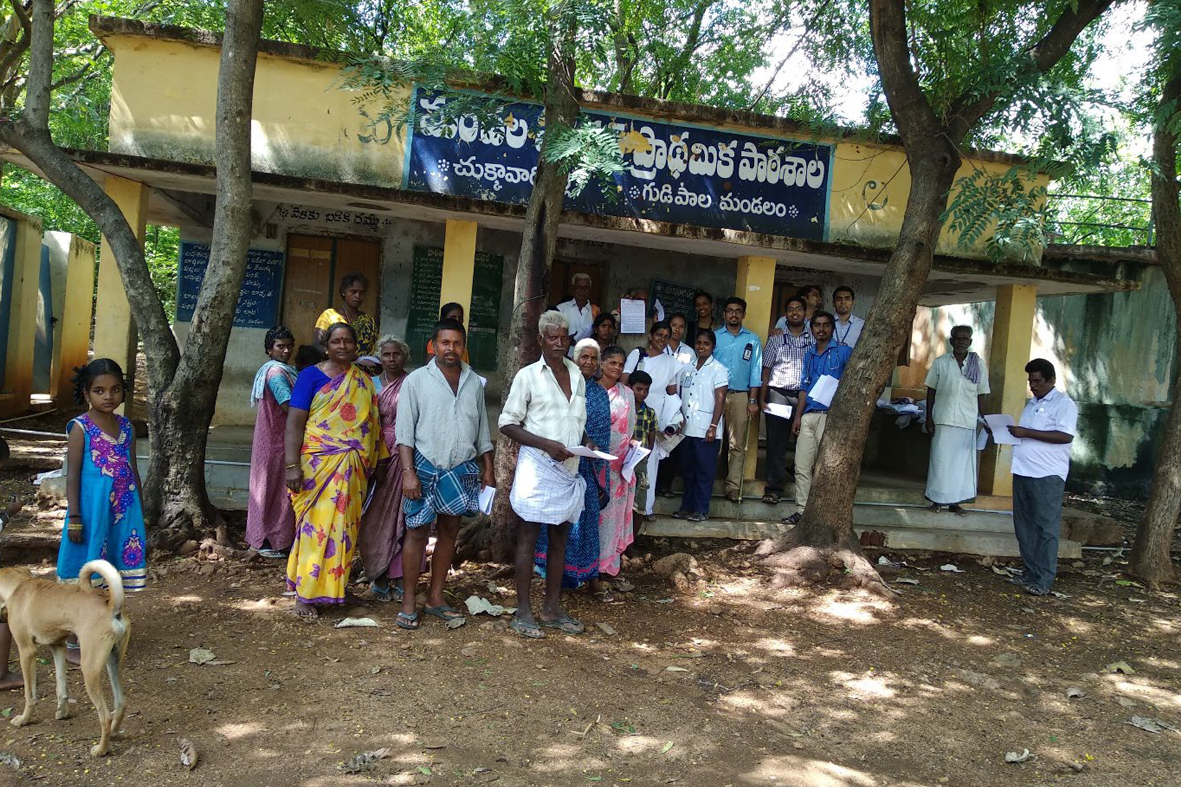 ©Meenakshi SekarA village visit by the CMC Vellore team – raising awareness about snakebite prevention and first aid. , Gudipala Mandal, Chittoor, Andhra Pradesh, India, September, 2018
©Meenakshi SekarA village visit by the CMC Vellore team – raising awareness about snakebite prevention and first aid. , Gudipala Mandal, Chittoor, Andhra Pradesh, India, September, 2018
Raising risk awareness
Most snakebite patients admitted to CMC come from villages in and around Vellore. Outreach programs in these communities are usually complemented with awareness-raising for snakebite patients and their families during their hospital stay.
This is followed by home and village visits, conducted by a team of nurse-educators, medical-trainees and doctors. The focus of these visits is on identifying the risk factors that make snake encounters more likely and alerting communities to the environments most frequented by medically-important species. The visits also teach appropriate first aid and other simple measures to prevent snakebites. Educational material comprises of printed leaflets with clear information, mainly in visual form with minimal reliance on text. During sessions on first aid, the emphasis is placed on using common materials that can be found in most Indian households.
 © Anika Salim, Sakthivel Vaiyapuri, University of Reading
© Anika Salim, Sakthivel Vaiyapuri, University of Reading
An educational pamphlet on snakebite prevention in the regional Tamil language.
‘A burden shared is a burden halved’
The “Snakebite Survivors’ Meet”, organised every year by the CMC Poison Centre, is a novel approach to empowering and engaging communities in preventing snakebites, exploring the role of peer educators in this process. The Meet brings together victims of snakebite envenoming and acts as a forum in which participants can share their personal experiences of dealing with the consequences of a snakebite with others who may have been similarly affected. Participants are also trained in snakebite prevention and first aid through simple didactic and hands-on sessions. They are encouraged to volunteer as peer educators in their communities to help disseminate relevant information in a locally-contextualised manner. The Centre continually interacts with peer educators to support them in this role.
Since 2019, the Meet has been conducted virtually, as a result of conditions imposed by the Covid-19 pandemic. The online mode has proven advantageous, however, since it allows participants to join from their homes at a mutually convenient time, after working hours, thereby saving transport costs and preventing the loss of a day’s wages. As a result, snakebite victims from relatively distant villages have also been able to access these sessions. Participants from 30 villages around Vellore were able to attend the event in 2021.
Shaping young minds
Children have a vital role to play in public health education. The CMC Poison Centre focuses on school visits, during which child-friendly illustrations and concepts of prevention and first aid are used to educate primary and secondary school children. The Poison Centre has been able to reach nearly 3,500 school children over the past two years.
 © Daniel Sundar Engaging young minds: a school education session in progress at Vellore, Tamil Nadu. September 2018
© Daniel Sundar Engaging young minds: a school education session in progress at Vellore, Tamil Nadu. September 2018
The main lessons of this outreach and education work are very simple. Snakebite envenoming is eminently preventable. But snakebite mitigation can only be achieved if communities affected by snakebite are actively involved in its prevention.

